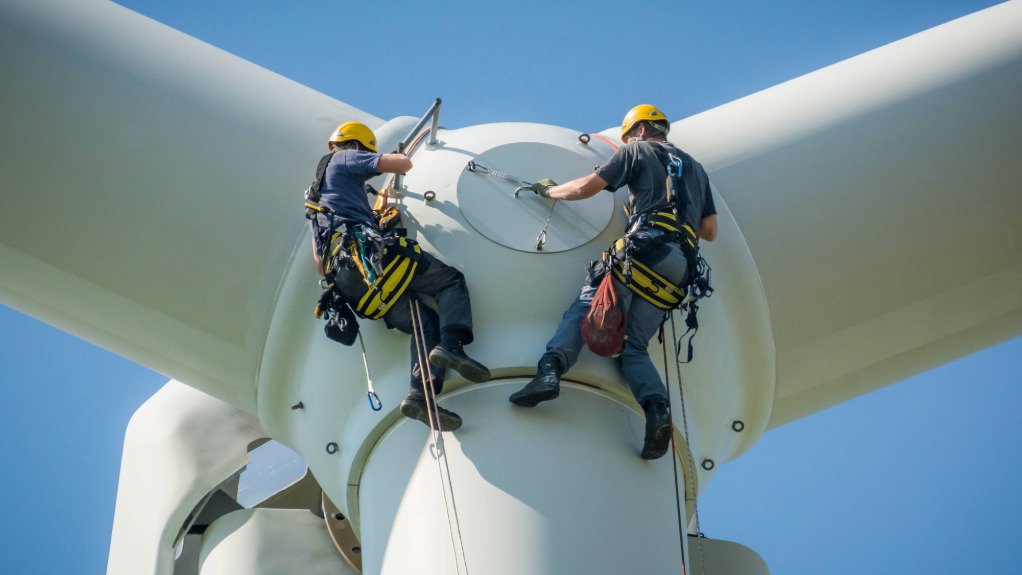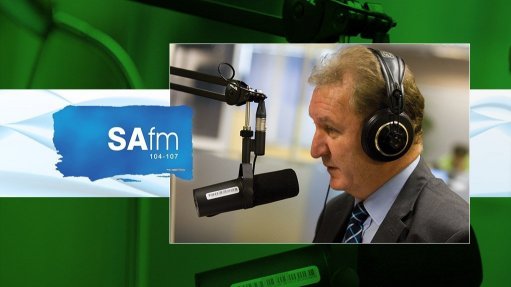Wind energy poses increased fall risks


TALL ORDER Maintaining safety standards especially in the wind turbine installation and maintenance sector has come to the fore as the development of green energy gains impetus
As the demand for greener energy helps drive the increased uptake of wind energy, the dangers that face workers in the sector are becoming even more evident.
As reported by the US Occupational Safety and Health Administration in a report named ‘Green Job Hazards’, workers in the wind energy sector face a range of catastrophic and even fatal safety risks, including everything from falls to burn and crush injuries, all of which would happen anywhere between 60 m and 120 m above ground.
The report states that if a wind farm is built on land, it will often be in a remote location, which compounds the danger, with workers facing transportation risks, while the excessive distances between the site and hospitals and/or emergency medical care facilities can potentially exacerbate the severity of any injury, as it remains untreated.
Additionally, wind turbines can weigh 1 000 t or more and require the construction of a concrete and steel foundation before workers can assemble the tower, hub, blades, and nacelle by crane.
Each of these phases and processes involve electrical work to ensure the turbine functions and is connected to an electricity distribution system, which increases the site’s safety hazards and introduces the risk of electrocution.
Meanwhile, global safety equipment and solutions manufacturer MSA Safety technical manager Tim Bissett stressed the importance of adhering to the latest available safety standards, having reported – in July last year – on considerations that installers should be looking for when choosing an appropriate fall protection system for wind turbines.
“Working at height is a risky business, and the wind energy sector is no exception,” Bissett said.
He explained that, according to the UK Health and Safety Executive, there were 29 work-related fatalities owing to falls from a height in the UK alone in 2021/22. This figure represented almost 24% of all worker deaths in that period, in the UK.
“While total industry deaths are declining year-on-year, the people behind these statistics remind us that there is still a long way to go,” he said.
Principally, safety standards vary across different locations and legislations, so it is important for companies and organisations to be aware of the standards that must be adhered to, and which require keen attention. For example, for fall protection equipment certifications in Europe it is European Standard (EN) standards.
“The EN standard used to apply in the UK as well but, following Brexit, the UK Conformity Assessment Mark was implemented from January 1, 2023,” Bissett said.
He proposed that, even after initial selection, a client should consider regular checks of fall protection systems for elements that could include the compliance certificates, and expiry or end-of-life dates.
Additionally, clients should ensure there are regular inspections scheduled for checks on equipment and/or system wear and tear.
Another element to consider when choosing fall protection systems for wind turbines is ease of use.
He also stressed that these systems should balance the users’ accessibility and preference with their needs within relevant applications.
Importantly, professional body Institute for Work at Height (IWH) reports that in South Africa there are no statutory requirements for any company or contractor doing working-at-height operations to be accredited or registered.
IWH reports that this, consequently, allows for fraudulent or ill accredited companies to conduct work at height operations.
IWH suggests that, before appointing a contractor, companies must have worked through steps to ensure the safety of workers on site. These include, where feasible, avoiding work at height where it is reasonably practicable to do so.
IWH adds that companies
must, if possible, minimise the distance and consequences of a fall, by using the appropriate type of equipment for the job in question.
“The first legal requirement – Section 8 of the Occupational Health and Safety Act – is the duty of an employer to ensure the safety of all workers and the work environment,” states IWH.
This is done by completing a comprehensive risk assessment, thereby establishing the requirements for a site-specific fall protection plan.
Comments
Press Office
Announcements
What's On
Subscribe to improve your user experience...
Option 1 (equivalent of R125 a month):
Receive a weekly copy of Creamer Media's Engineering News & Mining Weekly magazine
(print copy for those in South Africa and e-magazine for those outside of South Africa)
Receive daily email newsletters
Access to full search results
Access archive of magazine back copies
Access to Projects in Progress
Access to ONE Research Report of your choice in PDF format
Option 2 (equivalent of R375 a month):
All benefits from Option 1
PLUS
Access to Creamer Media's Research Channel Africa for ALL Research Reports, in PDF format, on various industrial and mining sectors
including Electricity; Water; Energy Transition; Hydrogen; Roads, Rail and Ports; Coal; Gold; Platinum; Battery Metals; etc.
Already a subscriber?
Forgotten your password?
Receive weekly copy of Creamer Media's Engineering News & Mining Weekly magazine (print copy for those in South Africa and e-magazine for those outside of South Africa)
➕
Recieve daily email newsletters
➕
Access to full search results
➕
Access archive of magazine back copies
➕
Access to Projects in Progress
➕
Access to ONE Research Report of your choice in PDF format
RESEARCH CHANNEL AFRICA
R4500 (equivalent of R375 a month)
SUBSCRIBEAll benefits from Option 1
➕
Access to Creamer Media's Research Channel Africa for ALL Research Reports on various industrial and mining sectors, in PDF format, including on:
Electricity
➕
Water
➕
Energy Transition
➕
Hydrogen
➕
Roads, Rail and Ports
➕
Coal
➕
Gold
➕
Platinum
➕
Battery Metals
➕
etc.
Receive all benefits from Option 1 or Option 2 delivered to numerous people at your company
➕
Multiple User names and Passwords for simultaneous log-ins
➕
Intranet integration access to all in your organisation



















